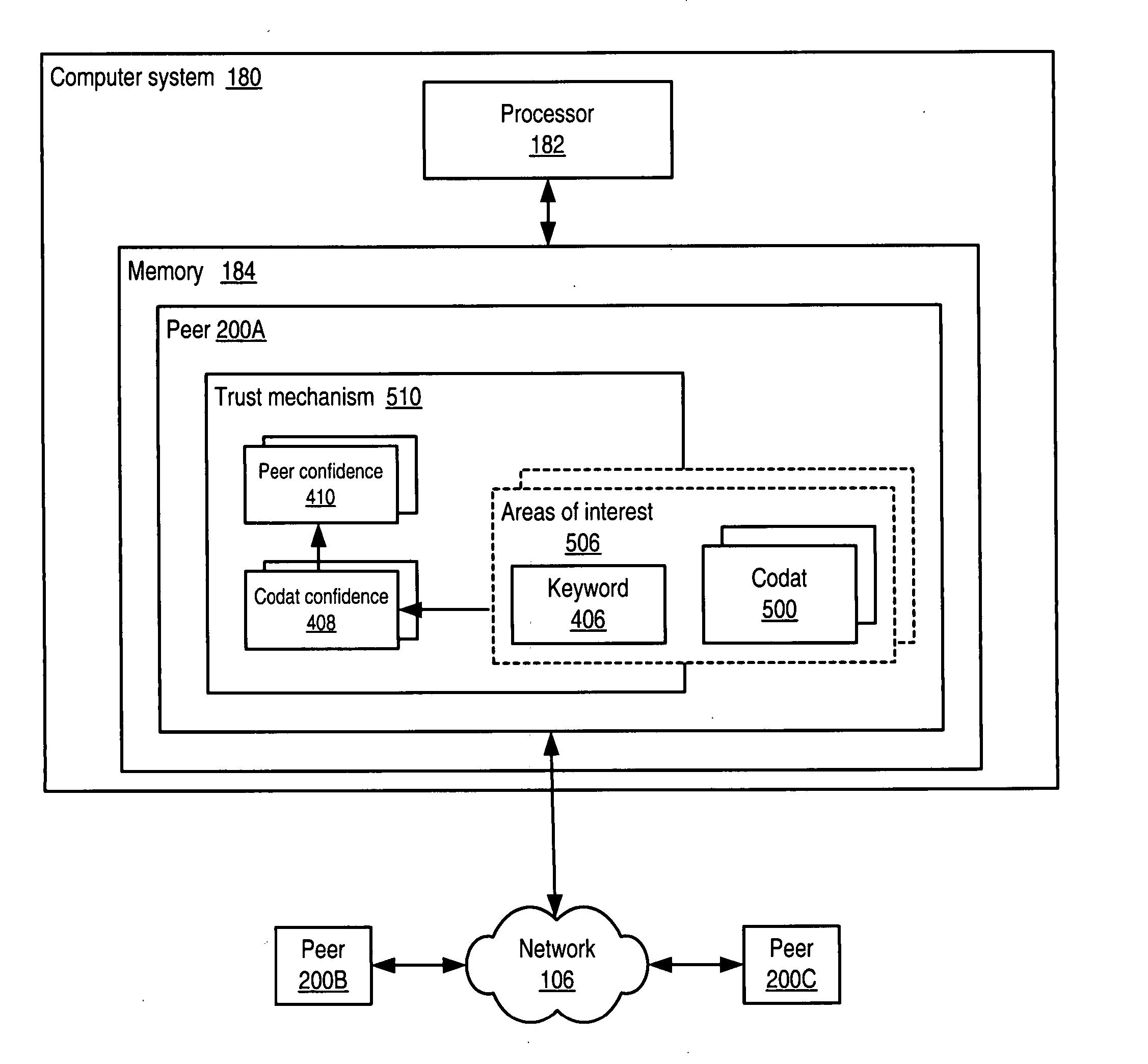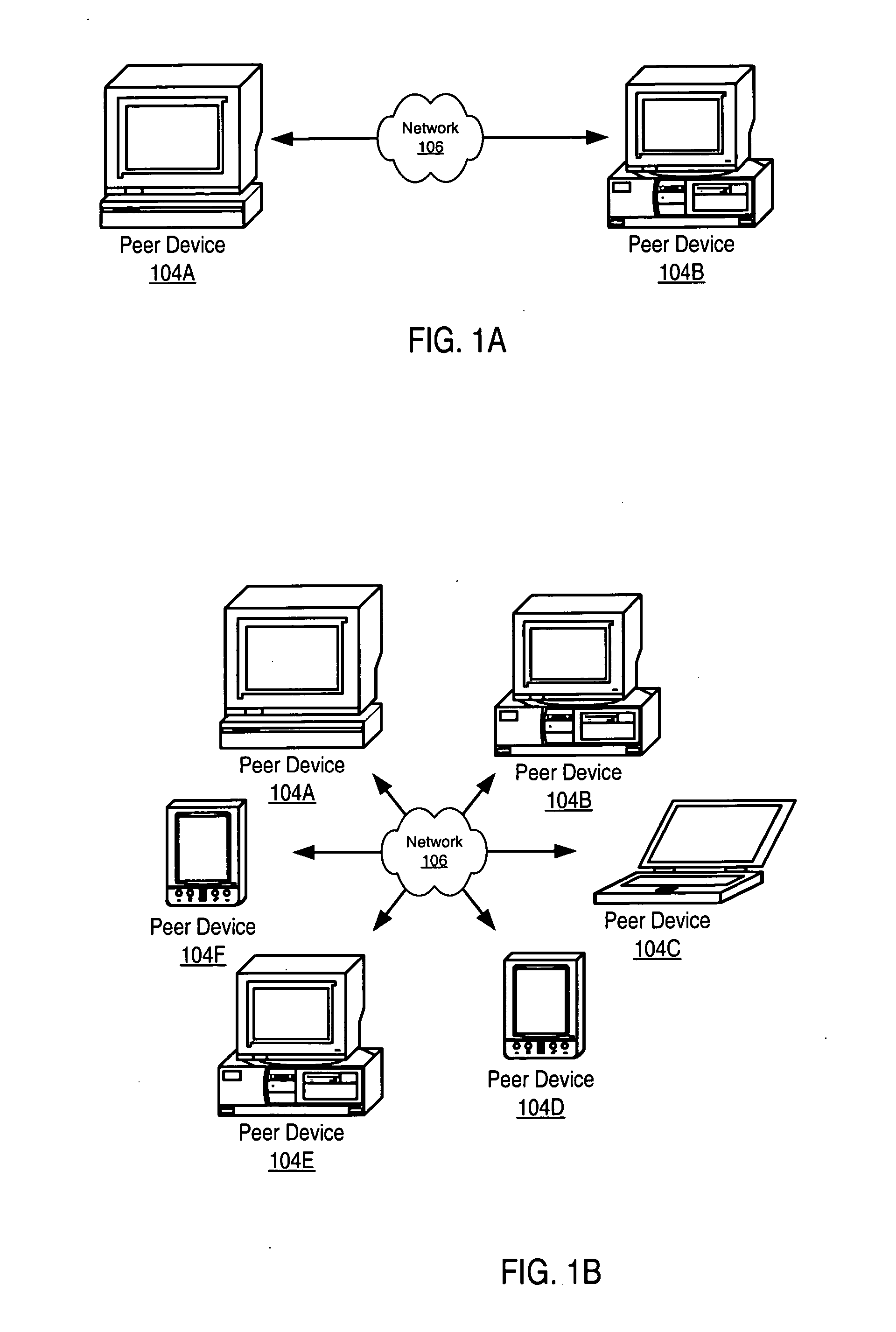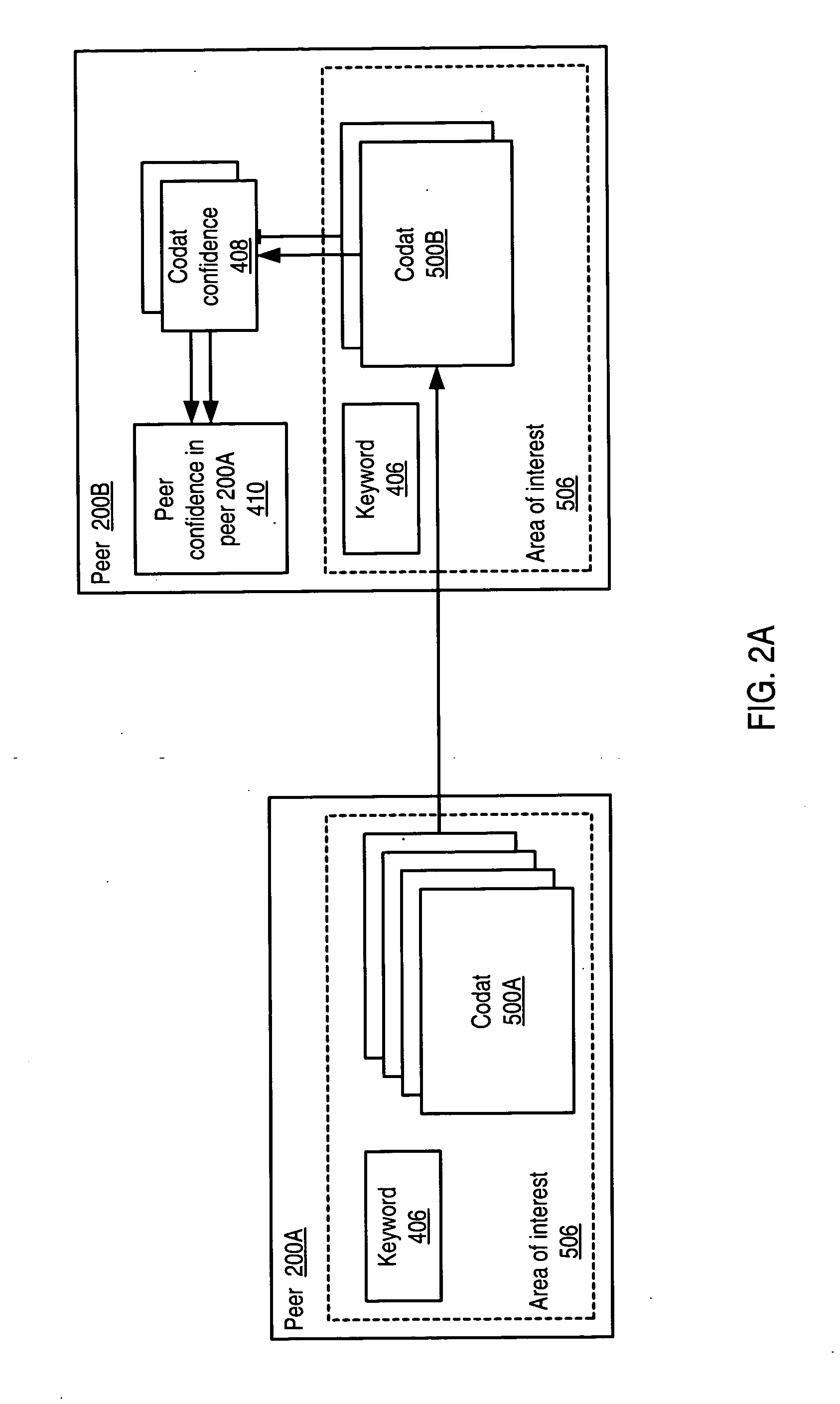Trust mechanism for a peer-to-peer network computing platform
a technology of peer-to-peer network computing and trust mechanism, which is applied in the field of distributed trust mechanism for peer-to-peer network computing environment, can solve the problems of adding unwanted complexity to a security model, confusing multiple identities, and little use, and achieves the effect of generating or updating codat confidence in the received codat and general ease of rating coda
- Summary
- Abstract
- Description
- Claims
- Application Information
AI Technical Summary
Benefits of technology
Problems solved by technology
Method used
Image
Examples
Embodiment Construction
[0072] Embodiments of a decentralized, distributed trust mechanism are described that may be used in various networking platforms, including, but not limited to, peer-to-peer and other decentralized networking platforms. The mechanism may be used, among other things, to implement trust relationships between and among peers and to implement trust relationships between peers and content and data (codat). Protocols and methods may be provided for disseminating and updating trust. For participating peers, trust may be biased towards data relevance, e.g. the quality of recipes in a cooking peer group in some embodiments. Trust may have multiple components or factors, and embodiments of the decentralized trust mechanism may provide for the inclusion of factors of trust based on a peer group's interests and / or group content relevance.
[0073] The term “codat” as used herein refers to any computer content—code, data (static and dynamic), documents, applications, certificates, or any other co...
PUM
 Login to View More
Login to View More Abstract
Description
Claims
Application Information
 Login to View More
Login to View More - R&D
- Intellectual Property
- Life Sciences
- Materials
- Tech Scout
- Unparalleled Data Quality
- Higher Quality Content
- 60% Fewer Hallucinations
Browse by: Latest US Patents, China's latest patents, Technical Efficacy Thesaurus, Application Domain, Technology Topic, Popular Technical Reports.
© 2025 PatSnap. All rights reserved.Legal|Privacy policy|Modern Slavery Act Transparency Statement|Sitemap|About US| Contact US: help@patsnap.com



